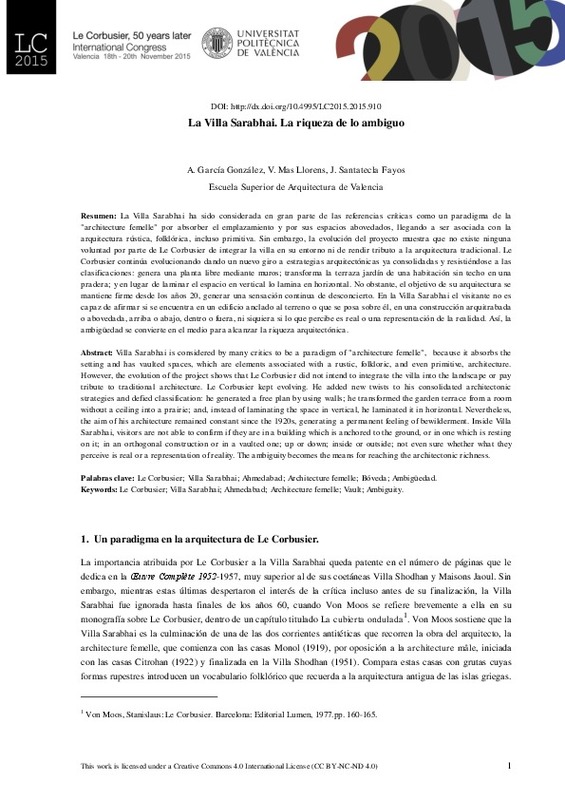JavaScript is disabled for your browser. Some features of this site may not work without it.
Buscar en RiuNet
Listar
Mi cuenta
Estadísticas
Ayuda RiuNet
Admin. UPV
La Villa Sarabhai. La riqueza de lo ambiguo
Mostrar el registro completo del ítem
García González, A.; Mas Llorens, V.; Santatecla Fayos, J. (2016). La Villa Sarabhai. La riqueza de lo ambiguo. En LE CORBUSIER. 50 AÑOS DESPUÉS. Editorial Universitat Politècnica de València. 786-803. https://doi.org/10.4995/LC2015.2015.910
Por favor, use este identificador para citar o enlazar este ítem: http://hdl.handle.net/10251/97560
Ficheros en el ítem
Metadatos del ítem
| Título: | La Villa Sarabhai. La riqueza de lo ambiguo | |
| Autor: | García González, Andrea Mas Llorens, Vicente | |
| Entidad UPV: |
|
|
| Fecha difusión: |
|
|
| Resumen: |
[EN] Villa Sarabhai is considered by many critics to be a paradigm of "architecture femelle", because it absorbs the
setting and has vaulted spaces, which are elements associated with a rustic, folkloric, and even primitive, ...[+]
[ES] La Villa Sarabhai ha sido considerada en gran parte de las referencias críticas como un paradigma de la
"architecture femelle" por absorber el emplazamiento y por sus espacios abovedados, llegando a ser asociada con ...[+]
|
|
| Palabras clave: |
|
|
| Derechos de uso: | Reconocimiento - No comercial - Sin obra derivada (by-nc-nd) | |
| ISBN: |
|
|
| Fuente: |
|
|
| DOI: |
|
|
| Editorial: |
|
|
| Versión del editor: | http://ocs.editorial.upv.es/index.php/LC2015/LC2015/paper/view/910 | |
| Título del congreso: |
|
|
| Lugar del congreso: |
|
|
| Fecha congreso: |
|
|
| Tipo: |
|









